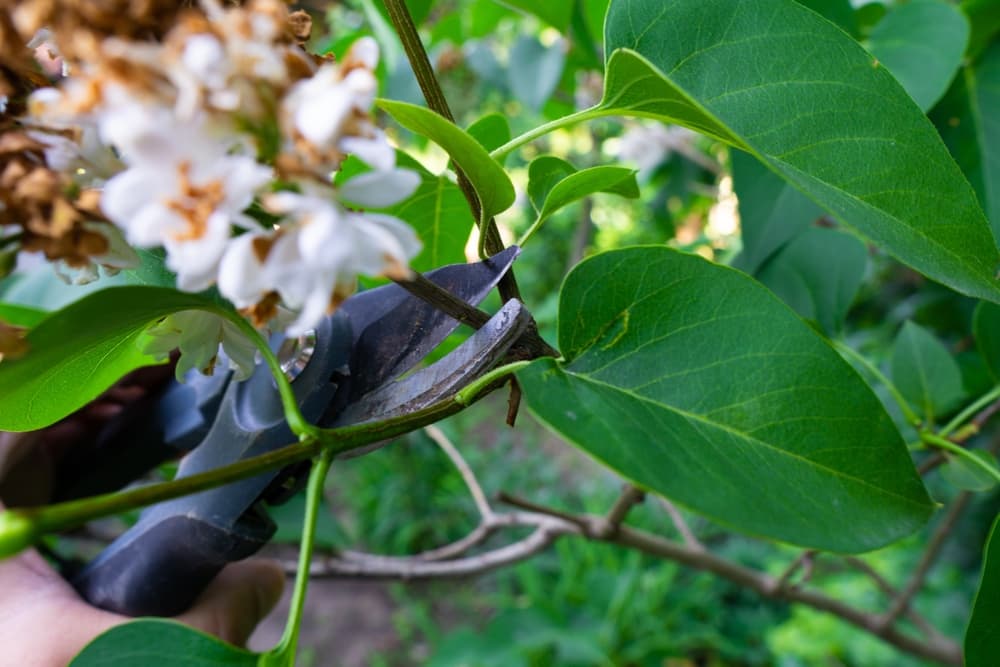Don’t Damage Your Choisya Plant – Only Prune Once All Risk Of Frost Has Passed

Chris is a gardening writer and nature enthusiast. He graduated from Oxford Brookes University in 2022 with an MA in Psychology. Chris works with the Leeds Green Action Society, helping their food cooperative by growing various fruit and vegetables on their two allotments in Hyde Park, Leeds.
Reviewed By COLIN SKELLY

Colin is a Horticulturist and Horticultural Consultant with experience in a range of practical and managerial roles across heritage, commercial and public horticulture. He holds the Royal Horticultural Society’s Master of Horticulture award and has a particular interest in horticultural ecology and naturalistic planting for habitat and climate resilience.
IN THIS GUIDE
CHOISYA GUIDES
Container Growing
Pruning
Soil Requirements
Varieties
Yellowing Leaves
Choisya is a beautiful bush bursting with adorable white flowers.
The delicate yet confident colour palette makes this plant a popular choice for British gardeners for a couple of reasons.
Firstly, they’re charming to look at.
Second, they pair well with all sorts of colours and shapes thanks to their non-dominating aesthetic, making them a flexible and versatile choice when planning your garden.

With so many flowers though, some gardeners find themselves wondering how best to prune this buoyant bloom.
If you’ve got a choisya and you’re unsure how to prune it without causing damage, or just need a little more info on the best time of the year for your pruning session, read on.
We’ve pulled together some fantastic tips to help you take the best care of this luxurious plant.
Why Prune Choisya?
This is a common question amongst gardeners with choisya.

First, let’s take a look at the reasons why you might want to prune this plant –
- Your choisya is getting too big, and is encroaching into other areas of your garden. Perhaps over pathways, making them tricky to walk on comfortably.
- Your choisya is growing out of its desired shape. As a shrub, keeping this plant a certain shape is not only possible but maybe even desirable. If you’ve got topiary ambitions, you’ll find yourself pruning more often.
If neither of these concerns is relevant, you won’t really need to prune choisya much.
The plant can do without it (unlike some other ornamental varieties that suffer if left unkempt).

Deciding When To Prune
There are a couple of things to keep in mind when pruning: firstly, new growth will occur at the pruning site.
Because one of the goals of pruning is to reduce the size of the plant whilst encouraging fresh new growth, you need to ensure you prune at a time of year where this will take place.
This leads us to our second consideration: frosty spells will damage newly pruned sites, potentially killing off any new growth.
With this in mind, the answer to the question of when to prune choisya becomes “after any risk of frost has passed!”
How Far Back Can Choisya Be Pruned?

This plant can take quite an aggressive pruning, up to a maximum of half of its size.
It’s usually recommended to prune more frequently and less drastically, but you do have options if you’ve left it longer than the ideal amount of time between haircuts.
How To Prune Choisya ternata
Now we’ve looked at the whens, let’s take a look at the how.
Pruning choisya isn’t too different from pruning other evergreen shrubs.
You’ll just need a sharp gardening tool like pruning shears, secateurs – or, if you don’t have those, a good pair of scissors.

Take care to use one clean cut where possible rather than hacking away.
The more exposed the cut, the more likely it is that disease will take hold; a clean-cut has the smallest possible incision site.
Once pruned, your choisya will appreciate a bit of fresh compost around the roots.

“I always like to mulch a tree or shrub when I’ve completed a pruning job,” shares Master Horticulturist Colin Skelly.
“Although not always strictly necessary, it feels right and ensures that plants that aren’t in a regular routine of annual mulching receive some organic matter over time.
“On free-draining soils, it will help with moisture retention, whilst on clay soils, it will help with drainage.”

This nutritional boost will expedite new growth, and should lead to a friskier, healthier bloom.
